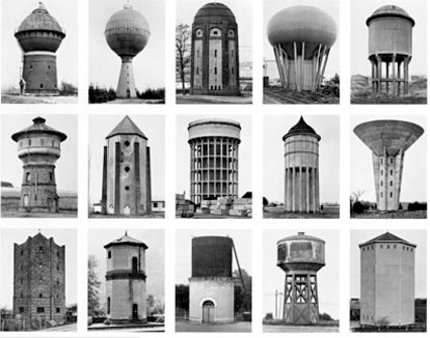Conceptual Artist Bernd Becher Dies At Age 75
Bernd Becher, who along with his wife, Hilla, photographed relics of the industrial age in Germany, England, and the United States, died last Friday in Rostock, Germany at age 75. According to the photographer Thomas Struth, who was once a student of the Bechers, he died following heart surgery. These days, when photography is all the rage in the conceptual art world, it is hard to remember how pioneering the Bechers’ work was.

Bernd Becher, who along with his wife, Hilla, photographed relics of the industrial age in Germany, England, and the United States, died last Friday in Rostock, Germany at age 75. According to the photographer Thomas Struth, who was once a student of the Bechers, he died following heart surgery.
These days, when photography is all the rage in the conceptual art world, it is hard to remember how pioneering the Bechers’ work was. Back in the 1970s, when I first noticed there was photography other than the kind I’d seen in Life magazine, I would scratch my head in wonder at the snapshot self-portraits by Cindy Sherman (wondering if the joke she was making was at my expense) and at the images of broken factories and crumbling brick water towers by the Bechers. I didn’t know the name of this husband-and-wife team, but I sensed something new in the cool objectivity of their black-and-white images. Presented in series or grids, the pictures forced you to look and make comparisons. These weren’t like the documentary pictures I was used to. There was no narrative; the photographer wasn’t there as a story-teller. The Bechers’ work was all about the act of seeing. They were about the idea of photography itself, demonstrating how the camera accumulates detail, and, with detail, meaning.
As for the concept of objectivity in photography, I’m not really referring to a simple lack of perspective. The best discussion I’ve seen about this comes from blogger Joerg Colberg.
Bechers’ influence reaches beyond the imagery he made. He opened up art institutions to the idea of photography as an important and worthwhile medium. Before he began teaching at Kunstakademie in Dusseldorf, Germany, it was largely a school for painters. While there, Becher taught students such as
Struth, Andreas Gursky, Candida Hofer, and Thomas Ruff, all of whom took away ideas about photographic objectivity (though they all ended up working in color).
“The Bechers were certainly the most influential teachers in photography since Harry Callahan and Aaron Siskind,” says Stephen Perloff, editor of The Photography Collector newsletter. As Perloff notes, the Bechers’ work helped take photography out of the confines of the photographic world and into the much more lucrative conceptual art market. However, while their students can command many hundreds of thousands of dollars for their work, the imagery of the Bechers can still be had for as low as a couple of thousand dollars. Expect that figure to climb rapidly from here on out.
–David Schonauer